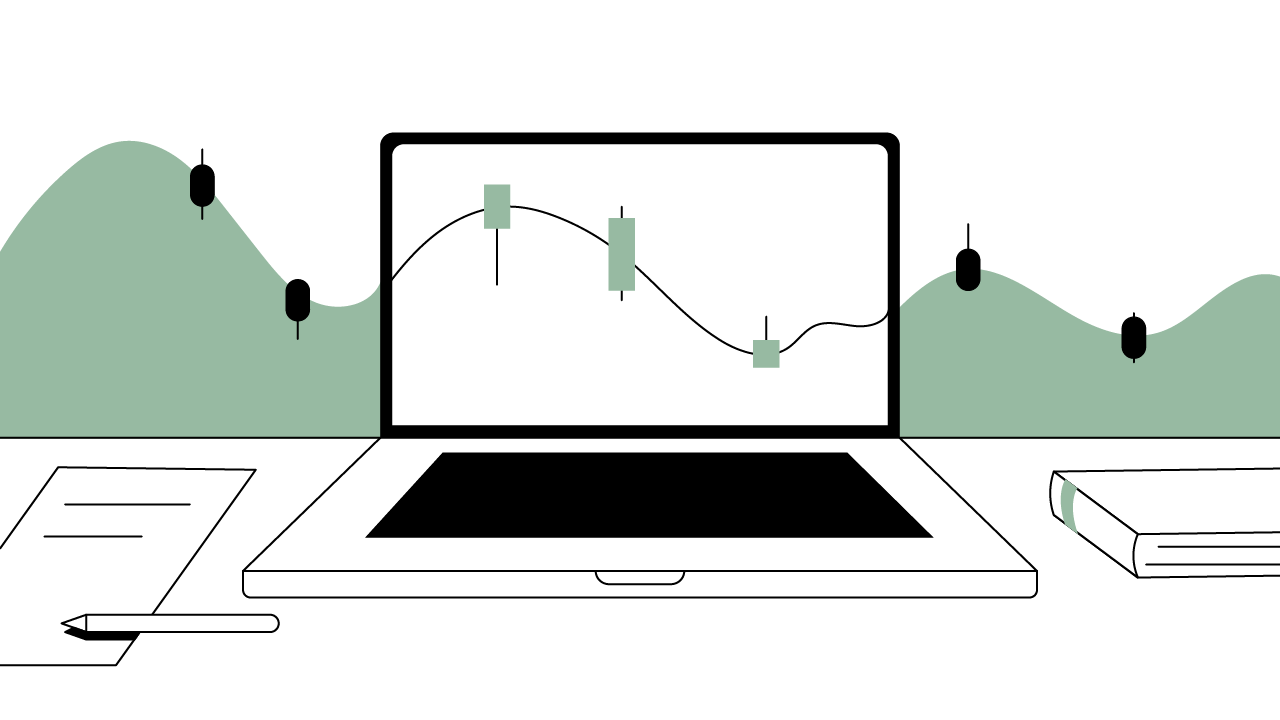Contents
What Is a Limit Order?
How Does a Limit Order Work?
What Is an Example of a Limit Order?
Can a Limit Order Be Executed at a Better Price Than Specified?
How Do I Set a Limit Order on a Trading Platform?
What Are the Advantages of Limit Orders?
What Are the Risks of Limit Orders?
A Final Word on Limit Orders
What Is a Limit Order? When To Use, Advantages, and Risks
Learn how limit orders work, their advantages, and their risks. Explore when to use them to enhance your trading strategy in cryptocurrency.
Updated March 20, 2025 • 4 min read

Summary
Understanding different types of orders is key for making informed investment decisions. One type of order is a limit order — a strategic tool used by traders to control execution prices and manage risk effectively. So, what exactly is a limit order, how does it work, and when should you use one? In this guide, we’ll break down its mechanics, benefits, and risks so you can determine whether it fits your trading strategy.
What Is a Limit Order?
A limit order is a trading instruction in which a trader sets a maximum price that they are willing to pay for the security or a minimum price that they are willing to accept (in the case of selling).
While a market order for stocks is executed at the current market price and immediately, a limit order only executes when the price arrives at the specified level. This gives you more control over your trades and minimizes possible risks.
Unlock the future of money on Gemini
Start your crypto journey in minutes on the trusted crypto-native finance platform
For example, if you wish to buy shares in a company with shares of $50, the limit price you provide will be $48. This order will only be triggered once the price drops to $48 and below.
Market order prioritizes immediate execution at the best available price, while limit order ensures trades are executed at a specific price, offering greater precision and control.
How Does a Limit Order Work?
A limit order functions by setting clear parameters for execution.
Limit Price
The limit price is the exact magnitude you set for activating your trade threshold, and it serves as your boundary for a buy or sell order.
Sometimes, traders depend on their technical tools, including support and resistance levels or moving averages, to arrive at the right limit price. A well-set limit price saves you from the shocks, ravaging your emotions to force an undesirable trade, especially in volatile markets. This makes sure to remain linked with your strategy without overpaying or underpricing.
Buy Limit Order
A buy-limit order allows you to purchase an asset at a specified price or less than that. This type of order is useful for traders who want to buy at a lower price during temporary price dips without constantly monitoring the price market.
This approach is especially appropriate in fast-moving markets, where prices change frequently. A buy-limit order helps you trade ahead of time without feeling pressure to execute your trades immediately.
While the buy-limit order helps you avoid buying above the set price, your order may sit untraded if the price doesn't drop to the set price. Weigh precision against the risk of missed opportunities.
Sell Limit Order
A sell limit order guarantees that you only sell an asset when it reaches or slightly exceeds your specified limit price, affording you much control over when you want to cash in on your profits.
This makes the strategy very useful in dealing with downside risks since you can sell off your asset and exit a particular position at a favorable value before the market turns unfavorable.
That said, sell-limit orders are most effective in highly liquid markets. During low liquidity, it may take time to fill a complete order, or even then, your order may only be partly filled.
What Is an Example of a Limit Order?
Let’s say Bitcoin (BTC) is currently trading at $40,000. You believe the price might dip, so you set a buy limit order at $38,000.
If BTC’s price drops to $38.000 or lower, the order executes, allowing you to buy Bitcoin at a favorable price.
Similarly, if you own BTC and want to sell when the price hits $42,000, you set a sell limit order at $42,000.
The order executes only when the price reaches your target, which is critical in the highly volatile crypto market.
Limit orders offer control over price execution while helping manage risk.
Can a Limit Order Be Executed at a Better Price Than Specified?
In certain markets, a limit order can be completed at a better price than the one you set. Although this is not the norm, it usually occurs when there is high liquidity or price volatility:
Buy Limit Order Scenario: If you placed a buy limit at $95 and the market price drops to $93, you can buy at $93 or even cheaper, depending on the parties’ selling inclinations.
Sell Limit Order Scenario: If you set a sell limit order at $110 and the price goes to $112, your shares may be sold at the new higher price.
These scenarios frequently arise in fast-moving markets or during periods of high trading volume, like after a major news or announcement. The objective of a limit order is to maintain price control, but this aspect can help boost probability.
How Do I Set a Limit Order on a Trading Platform?
Setting a limit order on a trading platform is straightforward and usually involves the following steps:
Choose the Asset: Go to the particular stock, ETF, or cryptocurrency you wish to trade.
Select Order Type: From the list of available orders, such as market and stop-limit orders, select “Limit Order.”
Set the Limit Price: Enter the actual price at which you wish to complete your trade. For example, if you are buying, enter your price limit to the buying price you are willing to pay.
Specify Quantity: State the number of shares or units of the security you would want to trade.
Choose Duration: Select the time frame for the order. Options often include:
Day Order: Valid only during the current trading sessions.
GTC: Stays active until executed or manually canceled.
Review and Confirm: Double-check the details, such as the limit price and order duration, before confirming.
Tools such as real-time charts and order previews are available on platforms like Gemini to help you refine your order settings — after all, the success of a limit order depends on factors like liquidity and market conditions.
What Are the Advantages of Limit Orders?
Here are the following key benefits of using limit orders:
Volatility Protection
In highly volatile stock markets, a limit order ensures that you can buy or sell at a price you’re comfortable with, protecting you from sudden market swings.
Risk Tolerance
By setting a limit-price, you define your acceptable level of risk tolerance. This provides greater control over your investments compared to market orders, which are subject to unpredictable price changes. By pre-defining your risk threshold, you can trade confidently without second-guessing market movements.
Wide Time Frames
With options like GTC orders, limit orders can remain active for extended periods. This is particularly helpful when trading in markets with irregular trading sessions or anticipating future price movements.
What Are the Risks of Limit Orders?
Here are the following potential downsides to using limit orders:
Failure To Execute
The biggest risk is non-execution. Setting your limit price far from your current market price makes it difficult for the order to be executed potentially causing missed opportunities because the market rarely reaches your specified price within the time you wish.
Requires Liquidity
Liquidity plays a crucial role in limit order execution. In low-liquidity markets, even if the price reaches your target, there might not be enough buyers or sellers to fulfill your trade.
Potential Losses in Partial Fills
Sometimes, only part of your limit order gets executed, leaving you with an incomplete position. This can be a disadvantage in fast-moving markets, where conditions can change rapidly. Partial fills may disrupt your trading plans, requiring additional adjustments to maintain portfolio balance.
A Final Word on Limit Orders
Like most tools, limit orders are versatile since they give traders precision, control, and security against volatile market conditions. When you fix the specific price level, you will not overpay or undersell your assets using other parameters to control your trading risk tolerance.
However, they are not without risks or complications. The non-execution risk, problems concerning liquidity, and partial fills are the considerations to keep in mind. Also, always confirm that your brokerage is SIPC-insured to protect your investments against firm insolvency.
Whether trading in cryptocurrencies or ETFs, limit orders help offer direction and discipline to the trade.
Ready to get started? Take control of your trading journey with Gemini.
Cryptopedia does not guarantee the reliability of the Site content and shall not be held liable for any errors, omissions, or inaccuracies. The opinions and views expressed in any Cryptopedia article are solely those of the author(s) and do not reflect the opinions of Gemini or its management. The information provided on the Site is for informational purposes only, and it does not constitute an endorsement of any of the products and services discussed or investment, financial, or trading advice. A qualified professional should be consulted prior to making financial decisions. Please visit our Cryptopedia Site Policy to learn more.

Is this article helpful?


